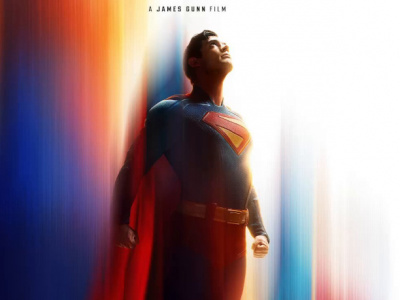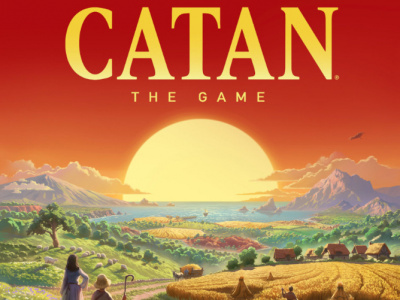 San Diego Comic-Con hasn’t jumped the shark; it’s become the shark. It must keep moving forward to stay alive.
San Diego Comic-Con hasn’t jumped the shark; it’s become the shark. It must keep moving forward to stay alive.In my last column, I talked about all the ways I loved this year’s San Diego Comic-Con. Now it’s time to put on the contrarian hat.
Let’s face it: 2014’s show was a noticeable drop-off from the all-out frenzy of the past decade. Yes, media buzzed, cash registers rang, and crowds surged inside the Convention Center and out. But there were fewer big movie panels in Hall H, fewer big announcements, and some conspicuous absences among mainstay franchises. Certainly there was nothing like Twilight or Hunger Games this year, for better or worse.
To a longtime attendee like me, that was just fine. But considering the trajectory that SDCC has enjoyed, can the show afford a "great but not stellar" year?
A world of its own. San Diego Comic-Con has been around since 1970 and has always been considered the destination show for fans of comics, sci-fi and related genres. It’s always been the meeting place for trade and retail, and it’s always been the place where Hollywood came to court an influential niche audience.
For the past decade or so, that hasn’t been enough. The Con has grown so much so fast since the early 2000s that the growth itself has become the story. How fast will the Con sell out? What A-list celebrities will make surprise panel appearances? What universe-changing announcements will publishers reveal?
Because of this dynamic, it has become impossible to judge SDCC as a simple fan event. The Con has become a media singularity, a product of its outsized reputation, constantly under pressure to exceed its own standards of spectacle and extravagance. And if it ever fails to live up to that, it risks losing its place at the center of a culture that it played a large part in creating.
Trapped at the high stakes table. There is a huge dollar premium built into everything surrounding San Diego Comic-Con, and it’s been going steadily up. It’s not just costs to exhibitors and attendees. As the Con has grown, so has the number of outside stakeholders: sponsors, marketing companies, websites and media, the off-site events that have attached themselves to the Con like barnacles on a battleship.
Restaurants and venues in the Gaslamp have jacked up their rates 10x or more to host events. Plastering a banner on the Marriot will run you a cool $500K. According to AdWeek, sponsors are now counting their Comic-Con budget in the millions. The city of San Diego has invested big in a convention center expansion partly based on forecasts of the Con’s continued growth and the expectation that the gravy train will just keep on rolling.
That whole pile of money pivots on SDCC’s status at the very pinnacle of pop culture – not just a great show, but The Show. The minute that attendees or exhibitors see SDCC as interchangeable with other similar events, competitive dynamics make themselves felt and the pricing structure becomes untenable.
That’s the nightmare scenario for SDCC and possibly why the organizers have become newly aggressive at protecting their brand through legal machinations. The scale of Comic-Con in the 21st century and the expectations that surround the show limit their ability to compete on the same basis as other large cons. There’s too much invested, too much superstructure assembled around the Con to give it room to maneuver in a terrain that’s suddenly become much more challenging.
Losing the fan lottery. Comic-Con traffics in being a must-attend event and exclusivity has so far worked in its favor, but it’s becoming the victim of its own popularity. Already, even diehard fans can’t count on being able to attend SDCC no matter how early they wake up on the morning that tickets go on sale or how well-connected they might be with long-time exhibitors. This year, in the interests of fairness, Con organizers increased the uncertainty even more by instituting a lottery-like system and requiring the purchase of individual day tickets rather than a four-day pass.
The unpredictability of access also affects the composition of the exhibit hall, the commercial core of the show. The level of effort required to simply buy a badge and book a hotel room is too much for some longtime attendees, including many of the 40- and 50-something customers of the convention’s mainstay exhibitors, the vintage comics and collectibles dealers.
Those dealers are already under pressure from changes in the collectors market. If their customers don’t come to SDCC, why should they bother? That kind of retail has had a declining presence at the Con for years, but what happens if it were to disappear completely? What other big-ticket fan-oriented enterprises could generate enough income to cover the costs of a booth or provide year-to-year stability for organizers and still help keep the "Comic" in Comic-Con, if only for legacy and appearances sake?
No longer the only game in town. If fans can live with missing out on the premieres, celebrities and buzz that you can only get in San Diego, there are plenty of other choices ranging from big national shows like New York Comic Con to smaller specialty gatherings that offer great experiences with less hassle and lower cost. That means attendees have more money to spend on merchandise, making regional shows better for exhibitors.
The risk is that once dedicated fans get in the habit of substituting for the annual pilgrimage to San Diego, SDCC starts to lose its status as the must-do show among its core audience. Sure, plenty of other people will rush in to replace them, but the exclusivity and ambiance of SDCC will take a hit.
Increasing the capacity of the San Diego Convention Center might help relieve the ticket crunch and give more people a chance to make SDCC part of their annual routine, but it’s possible the expansion will come online too late if market diffusion is already in full effect by 2016.
Fading star power. The possibility – indeed likelihood – that the biggest stars in the world might show up unannounced at a Comic-Con panel is what gives SDCC its sense of place and its unquestioned command of the media spotlight.
Unfortunately, after a few years of erosion, 2014 saw a marked decline in the star power of Hall H. If that were a blip related to one-off factors, timing and lackluster announcements, it would not be a big deal.
The problem is, it likely reflects a strategic shift on the part of Hollywood marketers as comics-based films have gone from niche to mainstream. Whereas in the early 00’s, studios courted Comic-Con audiences to attract core fans to their franchises, today they can largely – and rightly – take the core audience for granted and devote their marketing resources to attracting other kinds of viewers.
Reversing this trend is existential for Comic-Con as we have come to know it. If fans and (especially) the media can no longer take for granted that the biggest movies and biggest stars come to Comic-Con, then it truly does become just one more show.
What next? There’s another threat to SDCC that’s possibly bigger than all of these other factors put together, having to do with the mainstreaming of comics culture. There are also a few advantages that SDCC can mobilize to keep its lead. But this piece has already gone on way too long and that discussion will have to wait till next time.
--Rob Salkowitz (@robsalk) is author of Comic-Con and the Business of Pop Culture. He and his wife have volunteered as Eisner Awards staff for the past 10 years.
The opinions expressed in this column are solely those of the writer, and do not necessarily reflect the views of the editorial staff of ICv2.com.







